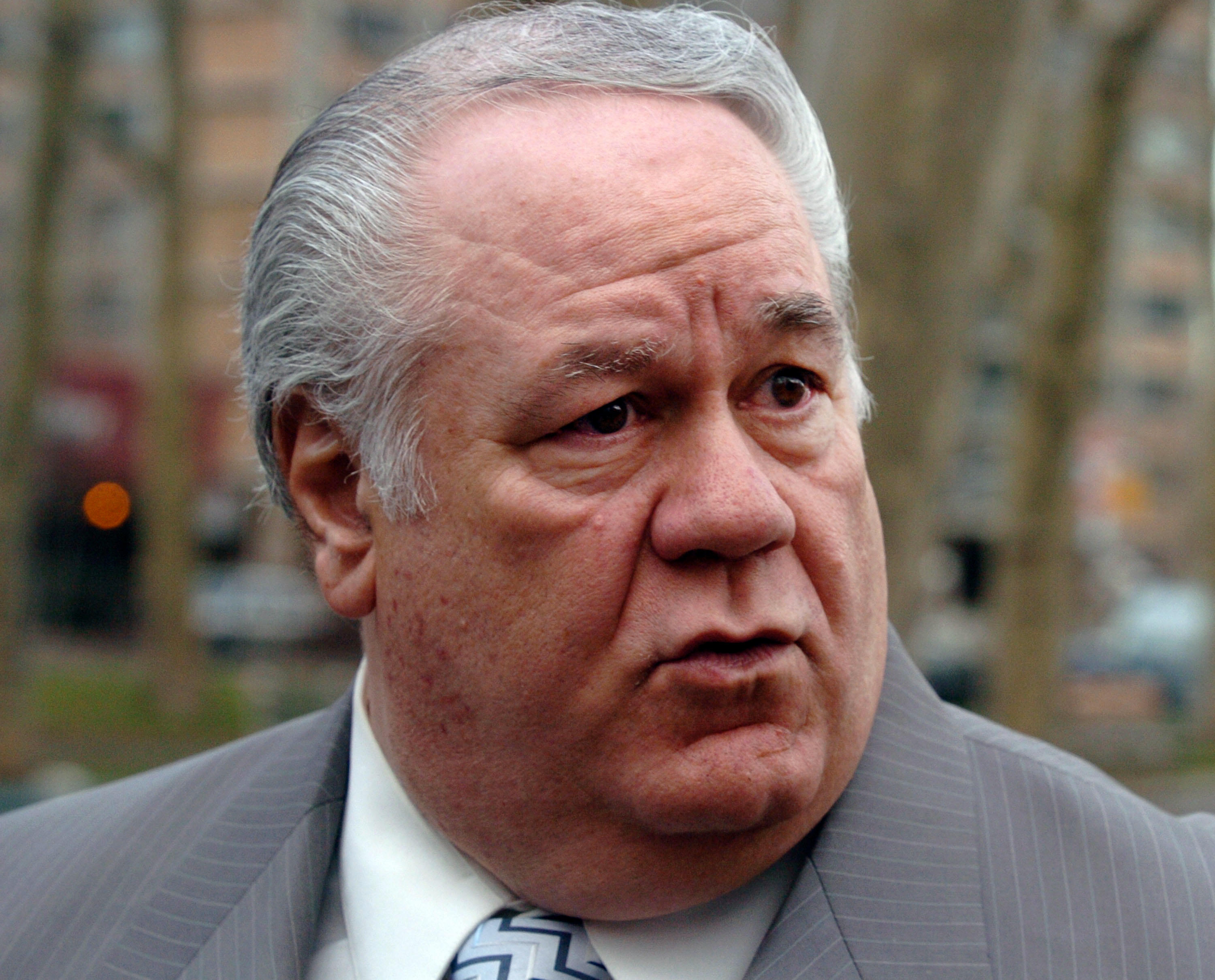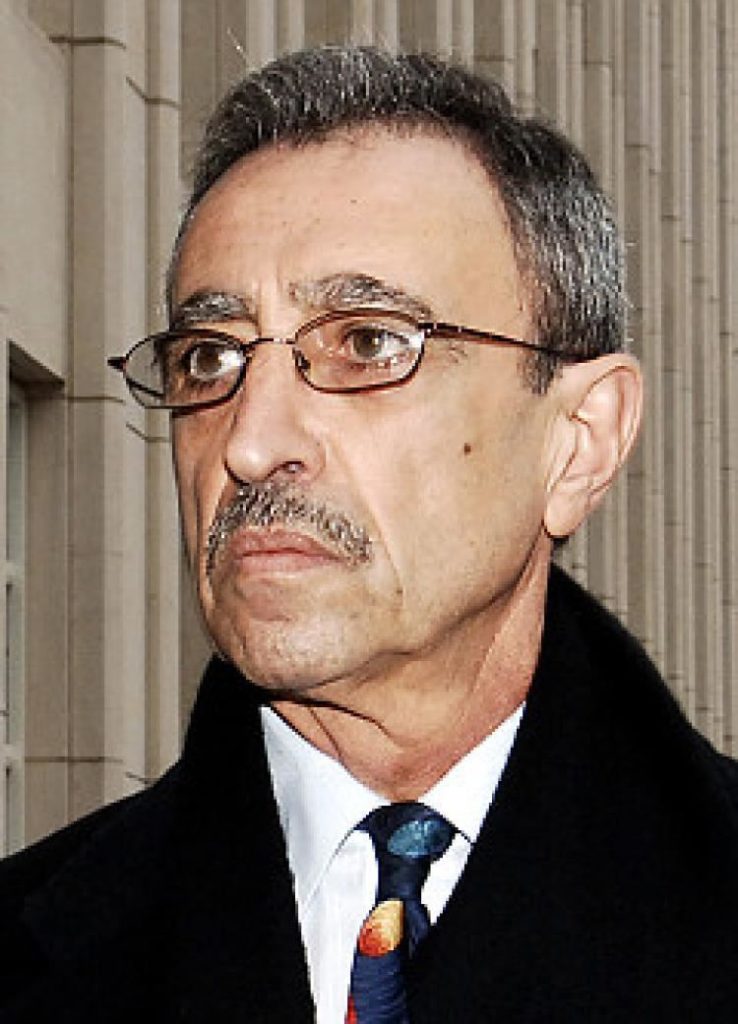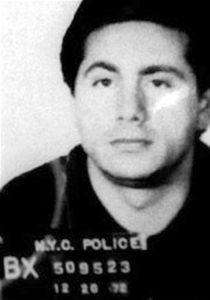‘Mob Cops’ saga still reverberates 10 years after their life sentences
Ex-NYPD detectives shocked the country by taking part in eight Mob hits and accepting $375,000 from Lucchese underboss

A former New York garment dealer, Burton Kaplan, sat down with DEA agents in 2004 to tell them an incredible story about two retired New York Police Department detectives. There was plenty of time. Kaplan, a 71-year-old longtime Mob associate and former mastermind of a $10 million marijuana sales ring, had completed only eight years of his 27-year prison sentence. He wanted it shortened to see his granddaughter.
Kaplan said that from 1986 to 1993 he met many times with two NYPD detectives, Louis Eppolito and Stephen Caracappa, to perform services for them and deliver $4,000 in monthly payoff money from Lucchese crime family underboss Anthony “Gaspipe” Casso in exchange for confidential information on police informants and investigations. Casso also paid Eppolito and Caracappa much more to assist in eight murders, including $70,000 for one whack. They received about $375,000 in all. It was a story law enforcement had heard a decade before – from Casso himself – but now they had what they considered a solid witness.
In March 2005, DEA and FBI agents converged on and arrested Eppolito and Caracappa as the pair walked into Piero’s, an Italian restaurant in Las Vegas. The two, following a 2006 trial in federal court in Brooklyn, were convicted of eight contract murders, two of which they did themselves, and counts of racketeering, bribery, kidnapping and other felonies, from 1979 to 2005. On March 6, 2009, a federal judge sentenced Eppolito to life in prison plus 100 years, Caracappa to life with 80 extra years, and fined each more than $4 million. Both men, unwaveringly, professed their innocence.
A decade after their sentencing, the so-called “Mob Cops” case remains both disturbing and extraordinary. Eppolito and Caracappa not only betrayed their police colleagues, but accepted large bribes to deliver police records to a top organized criminal for years, and, worse, acted willingly as his hit men while working as police officers.
“I have never dealt with anything this egregious,” John Peluso, assistant special agent for the DEA’s New York field office, told the Associated Press. “They are toxic.”
U.S. District Judge Jack B. Weinstein, who presided over the “Mob Cops” trial, once remarked that the “two defendants have committed what amounts to treason against the people of the City of New York and their fellow police officers.”
Early suspicions

Joseph Coffey, the highly regarded, one-time head of NYPD’s Organized Crime Task Force and who knew Eppolito and Caracappa before retiring in 1985, said he suspected both men and prevented Caracappa from joining the squad (Caracappa joined it after Coffey left).
“It was well-known they were hooked up with the Mob,” Coffey told The Philadelphia Inquirer in 2005. “Let’s put it this way. I couldn’t afford a $2,000 suit, and they could. Does that tell you something?”
There were other warning signs about Eppolito and Caracappa early on. Both men were from Brooklyn and joined the NYPD in 1969. Both received promotions to detective, and had friends and acquaintances in the Mob, which in and of itself does not mean they were ripe for corruption and murder.
Caracappa, a U.S. Army sergeant during the Vietnam War, was a childhood friend of Thomas Bilotti, who became a close aide to Gambino crime family boss Paul Castellano for several years until 1985, when Castellano and Bilotti ended up shot dead on orders of Gambino underboss John Gotti.
Ironically, given what would transpire, Caracappa in the 1980s helped set up the NYPD’s Organized Crime Homicide Unit.
Eppolito’s Mob ties ran deeper. His father, Ralph “Fat the Gangster” Eppolito, acted as a Gambino soldier and enforcer. His uncle was James “Jimmy the Clam” Eppolito, a Gambino captain who led gambling and other rackets. “Jimmy,” who made his son, James Jr., a family member, had once worked for family boss Carlo Gambino and associated closely with racketeer Carmine “The Doctor” Lombardozzi.
In 1979, in a well-publicized murder case, “Jimmy” and son James were killed by unidentified gunmen while seated in a car in Brooklyn. An unknown shooter murdered an eyewitness months later. Investigators eventually linked the murders to Gambino hitman Roy DeMeo, murdered in Brooklyn in 1983.
In the early 1980s, Kaplan served time in the same prison with Frank Santoro Jr., Eppiloto’s cousin. After the two were free, Santoro told Kaplan that his cousin and his partner would be willing to give law enforcement information on informants, pending arrests and other services for money. Both cops had access, but Caracappa, part of a task force that included FBI agents, could obtain better intelligence information. Kaplan agreed and contacted Casso.
Police records found
In 1984, FBI agents raided a home in New Jersey occupied by a Sicilian Mafia soldier and major heroin trafficker, Rosario Gambino. Inside, agents recovered a file folder with police Intelligence Division records used by Eppolito. The pages, photocopied at the detective’s station in Brooklyn, contained his fingerprints. He had signed a records log for the file in December 1983, while the feds had Gambino under investigation.
Later, newspapers reported that Rosario Gambino was the cousin of Carlo Gambino and that Rosario and Eppolito had been friends for years, frequently meeting at a café in Coney Island, Brooklyn.
The NYPD that November suspended the 36-year-old Eppolito without pay. He faced termination based on administrative – not criminal – charges of improperly copying and exposing police records and being absent from duty. A month later, a judge gave Rosario Gambino 45 years in prison for smuggling millions worth of heroin.
Nevertheless, in April 1985, the NYPD gave Eppolito a clean bill of health. The department’s Trials Commissioner Hugh Mo declared him “completely cleared” after believing his story that he handled the file at the request of a sergeant at the Intelligence Division who wanted him to show it to cops at Eppolito’s precinct in Brooklyn. No one could explain how the file made it to Gambino’s home, except the suggestion that Eppolito had placed the file in an unlocked cabinet at his precinct.
“There was no evidence before me other than that Detective Eppolito epitomizes the finest in the department and is the unfortunate victim of circumstances,” Mo told the New York Daily News, which noted that Eppolito was the “11th most decorated cop in the city.”
The detective returned to the force, which granted him $11,000 in back pay. “Nothing short of clearing my name could have replaced the tears my family cries over this,” Eppolito said to the paper.
‘Gaspipe’ talks

A huge hint came in 1994, 10 years before Kaplan’s statement, this time from “Gaspipe” himself. Casso, facing charges related to the 36 murders he confessed to, turned informant for the feds and offered a detailed account of the work he assigned to Eppolito and Caracappa (Eppolito had retired in 1990 and Caracappa, on a disability pension, in 1992).
Casso, who called the two men his “Crystal Ball,” said he hired them in 1986 on a salary of $4,000 a month to copy intelligence reports on NYPD probes and files naming Mob informants, so Casso could order the informers killed. The deal lasted until 1990.
The job also included contract murders – or setting victims up for murder – on his demand, and they were willing to carry them out. Kaplan himself requested the first one. He wanted them to kill an Israeli diamond dealer, Israel Greenwald, whom Kaplan feared might tell authorities about Kaplan’s scheme to steal Treasury bills. In February 1986, the two detectives, with Santoro as a passenger, made a traffic stop on Greenwald, and falsely said he was a suspect in a hit-and-run. They took him to an auto repair garage and put a bag over his head. Santoro shot him dead and the trio buried him beneath the concrete floor. Police dug up Greenwald’s skeleton 19 years later, after the arrests of Eppolito and Caracappa.
A far bigger assignment in 1986 for the “Mob Cops,” via Casso, didn’t work out – a planned hit on Gambino underboss Salvatore “Sammy the Bull” Gravano.
Then in September 1986, some gunmen made an attempt on Casso’s life. The underboss directed Eppolito and Caracappa to find out the names of those suspected to have been in on the attempt. The pair delivered a list of names and addresses. One named person was James “Jimmy” Hydell. Casso had Eppolito, Caracappa and Santoro kidnap Hydell, a Gambino associate. In October, the two cops searched the Staten Island home owned by Hydell’s mother, located him in Bay Ridge, Brooklyn. With Santoro’s help, they handcuffed Hydell, locked him in the trunk of their car and brought him alive to Casso. Casso paid the three men $40,000. His henchmen tortured, murdered and buried Hydell. His body never turned up.
Wrong guy
That December, Casso asked Kaplan to direct Santoro to get the two cops to use the police computer to obtain the address and photo of a guy named Nicholas Guido, another person on the list provided by Eppolito and Caracappa. But Santoro said that Eppolito wanted more money, another $4,000. Casso declined and decided to search for Guido himself. After locating a Nicholas Guido in Brooklyn, Casso sent a hit man. On Christmas Day, outside Guido’s mother’s house, the shooter fired multiple rounds into Guido’s car, ending the man’s life. Trouble was it was the wrong man. This Guido, a telephone installer, merely had the same name as the targeted, still-living mobster, Nicholas Guido. Santoro told Kaplan that if Casso had hired them, they would have “gotten the right Nicky Guido.”
In 1987, Santoro was shot and killed while hanging out with a person Casso had marked for death. That year, Eppolito gave Casso background data on Mob informant John Heidel, and Casso had Heidel killed. In 1990, Eppolito and Caracappa used police computers to locate Anthony Dilapi, hiding in Hollywood, California, and a Lucchese capo, Bruno Facciola. Casso, who suspected the men were informants, had Dilapi and Facciola shot dead.
Casso requested an additional hit in 1992. Eppolito and Caracappa, by then retired, signed off on his contract to whack Edward “Eddie” Lino, a Gambino captain, for a hefty $65,000. They drove behind Lino’s Mercedes-Benz on a Brooklyn parkway, pulled up beside him and Caracappa fired nine shots into the vehicle, killing him. A grateful Casso ended up giving them $70,000 for the hit.
Some New York cops theorized that Caracappa had another motive, based on his belief that Lino was part of the hit squad that in 1985 murdered Castellano and Caracappa’s good friend Bilotti, and he desired to exact his revenge on Lino.
Investigators were inclined to believe Casso’s stories, but as the sole witness, they considered the prolific Mob killer undependable, and the probe fell apart.
Move to Las Vegas
By the mid-’90s, after a grand jury in New York declined to indict Eppolito and Caracappa, they moved across the country, to homes on the same street in suburban southwest Las Vegas. Both cashed their substantial NYPD pension checks. Caracappa took a job as assistant chief of security at a women’s prison in North Las Vegas. Eppolito, a one-time bodybuilder, viewed himself as a Hollywood screenwriter and actor from bit roles in several films such as the 1990 mob classic Goodfellas. While Eppolito lived in Las Vegas, authorities learned of phone calls he made to associates of the Lucchese and Bonanno crime families. He also met with Kaplan, who also moved to Las Vegas in 1994. But in 1996, the ex-felon Kaplan was arrested in New York in connection with the marijuana ring and sent to prison. He refused to talk to the DEA, FBI and New York Police about their interest in “two dirty cops.”
Back in New York, years had passed and the case on the two men grew colder. Until 2003, when NYPD detective Thomas Dades established some fresh leads. He examined the work records of Eppolito and Caracappa. Then Dades happened on a stronger lead when Betty Hydell, James’ mother, told him that Eppolito and Caracappa showed up at her Staten Island home and asked to see James just before her son’s 1986 disappearance.
Dades took his new evidence to the Brooklyn District Attorney’s Office. Dades learned that many documents from Internal Affairs probes on the two men, going back years, were missing. Then the record of the computer search Caracappa made on Guido surfaced.
In 2004, a strong witness willing to testify emerged. Kaplan, who had kept his mouth shut while in prison for about eight years, was now ready to spill about being Casso’s go-between on payments for the police records and the murders.
Kaplan also revealed that when Eppolito and Caracappa gave Casso tips about informants linked to the Bonnano and Genovese families, Casso would forward the news to those families, potentially resulting in more gangland hits.
A federal judge, grateful for Kaplan’s turn and cooperation in testifying at trial against the disgraced ex-cops, sliced Kaplan’s prison sentence down to nine years, leading to his release in 2006. Kaplan died in hiding in 2009 at age 75.
The fallout from the “Mob Cops” debacle lasted for years to come. In 2010, New York City agreed to pay $9.9 million to a man who spent 19 years in prison after Eppolito and Caracappa framed him in the homicide of a prostitute. The city in 2015 granted $5 million to the family of wrongly fingered Nicholas Guido.
Caracappa, for years suffering from cancer, lost an appeal to have his conviction overturned in April 2016. Two months later, he filed for a “compassionate release.” Judge Weinstein answered: “There is nothing I can do in your case.” Caracappa died in a prison hospital in North Carolina on April 9, 2017, at age 75.
Eppolito, now 70, is still serving his life sentence at the U.S. Penitentiary, Tucson, a high-security prison in Arizona.
Feedback or questions? Email blog@themobmuseum.org





